
Inside a federal building office during the Section 504 protest, HEW employee Bruce Lee posts a hand-made sign ‘504 is law now make it reality.’ Photograph by HolLynn D’Lil. Source: FoundSF, the San Francisco Digital History Archive
Between April 5 and April 28, 1977, hundreds of disabled and handicapped activists organized, protested, and occupied government buildings around the country to pressure the U.S. Secretary of Health, Education, and Welfare, Joseph Califano, to enact Section 504 of the Rehabilitation Act of 1973 and publish regulations to guide its enforcement.
This was the most-powerful federal protection for disabled people in the United States before the passage of the Americans with Disabilities Act of 1990 and it was toothless without regulation.
Section 504 states,
No otherwise qualified individual with a disability in the United States, as defined in section 705(20) of this title, shall, solely by reason of her or his disability, be excluded from the participation in, be denied the benefits of, or be subjected to discrimination under any program or activity receiving federal financial assistance or under any program or activity conducted by any Executive agency or by the United States Postal Service.
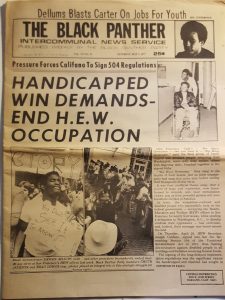
The Black Panther Party supported the demonstrators occupying the SF federal building by providing food during the sit-in. Source: The Black Panther Inter Communal News Service. May 7, 1977
After Congress passed Section 504 in 1973 as part of the Rehabilitation Act, the subsequent administrations of Nixon, Ford, and Carter failed to take action. In large part, this was because a powerful bloc of businesses and other organizations began to lobby the government to abandon Section 504 enforcement. They did not want to dedicate resources to increase accessibility or lose their federal funding.
In the same few years, it was challenged in courts with contradictory outcomes. Under President Carter, this unnecessary delay and disregard for disabled people came to a head in 1977, when disability rights activists formed committees around the country and worked together to put pressure on the government by protesting at Health, Education, and Welfare federal buildings in Boston, Seattle, New York, Atlanta, Philadelphia, Chicago, Dallas, San Francisco, Denver, and Washington, D.C. The longest protest was the sit-in at the San Francisco protest, in which over 100 activists occupied the San Francisco federal building for several weeks.
These activists successfully brought the nation’s attention to the fact that his Secretary of Health, Education, and Welfare refused to sign drafted regulations for Section 504 and put enough pressure on him that he approved the regulations by the end of the month.
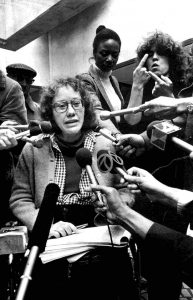
Kitty Cone, a lead organizer of the San Francisco sit-in, speaks to the press. Source: Smithsonian.
Kitty Cone, a disability rights organizer, recalled the San Francisco sit-in:
The San Francisco federal building sit-in, the only one that endured, lasted 28 days and was critical in forcing the signing of the regulations almost unchanged. It began with a rally outside the federal building, then we marched inside where between 1 and 200 people would remain until the end. The composition of the sit-in represented the spectrum of the disability community with participation from people with a wide variety of disabilities, from different racial, social and economic backgrounds, and ages from adults to kids with disabilities and their parents.
We all felt that we were acting on behalf of hundreds of thousands of people who were not able to participate, people all over the country who were institutionalized or stuck in other dependency situations.
Their efforts were successful before the month was up: Secretary Califano enacted the regulations for Section 504 on April 28, 1977.
Learn More
Read Sitting-in for disability rights: The Section 504 protests of the 1970s by Andrew Grim, Smithsonian American History Museum
The historic sit-in is featured in the 2020 documentary Crip Camp and in Being Heumann: An Unrepentant Memoir of a Disability Rights Activist, the biography of Judy Heumann, who led protests for disability rights throughout the 1970s and into the 21st century.
The Longmore Institute on Disability at San Francisco State University created an exhibition around these 504 protests called “Patient No More,” as well as a traveling version which is currently touring the U.S.
Brad Lomax was a disability rights activist and the founder of the Washington D.C. chapter of the Black Panther Party. Lomax was present at the San Francisco 504 sit-in and was instrumental in getting the assistance of the Black Panther Party in mobilizing supplies and publicizing the protest.
The Power of 504
This award-winning 18-minute documentary video captures the drama and emotions of the historic civil rights demonstration of people with disabilities in 1977, resulting in the signing of the 504 Regulations, the first Federal Civil Rights Law protecting people with disabilities. Includes contemporary news footage and news interviews with participants and demonstration leaders. Available in open caption, audio descriptive, and standard formats in English and Spanish.



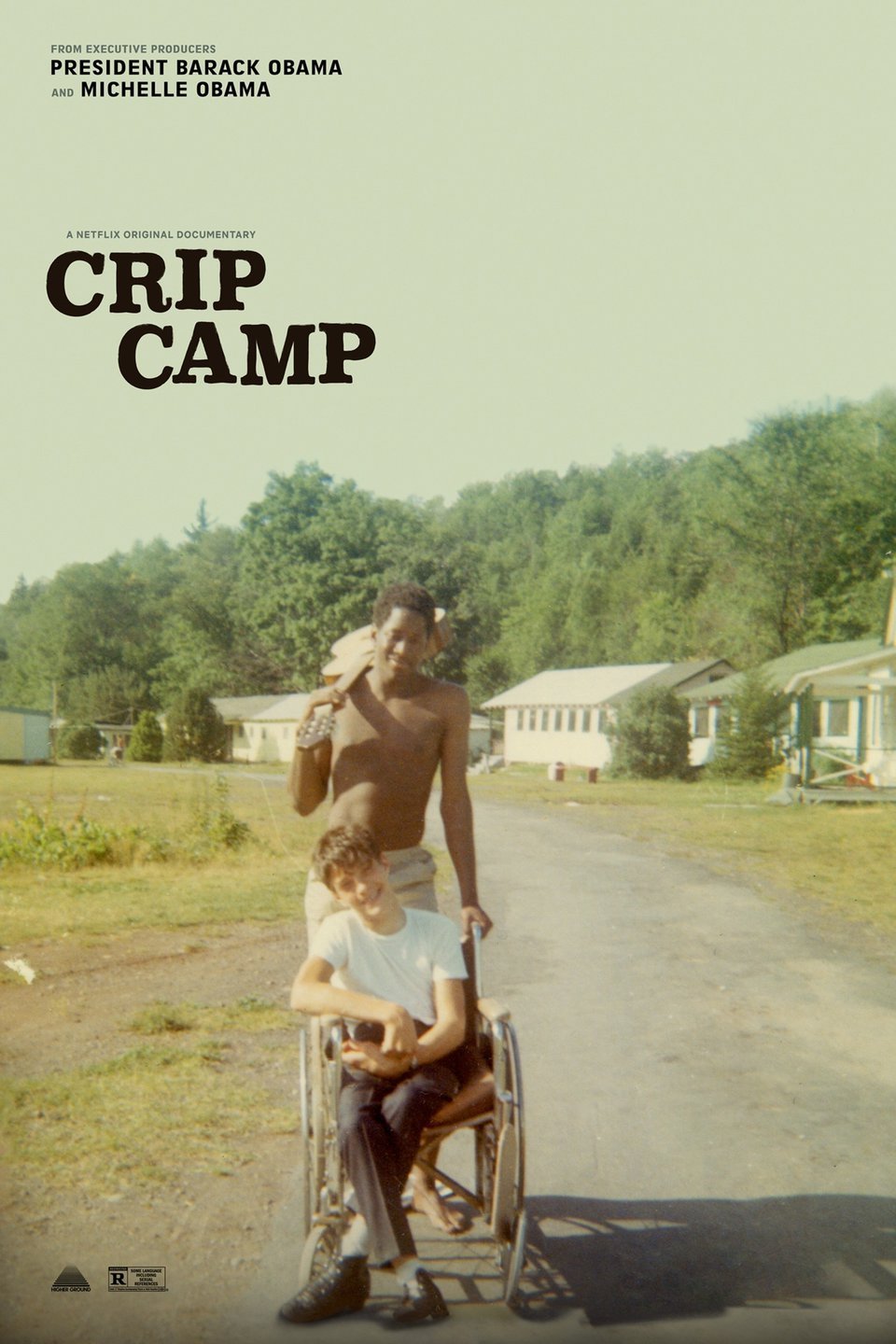
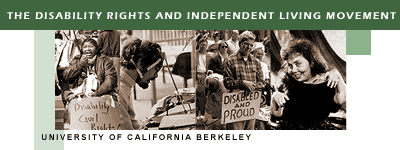

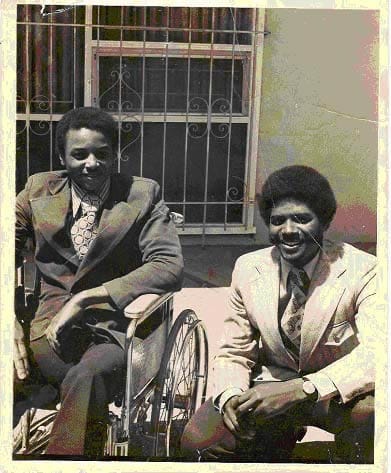
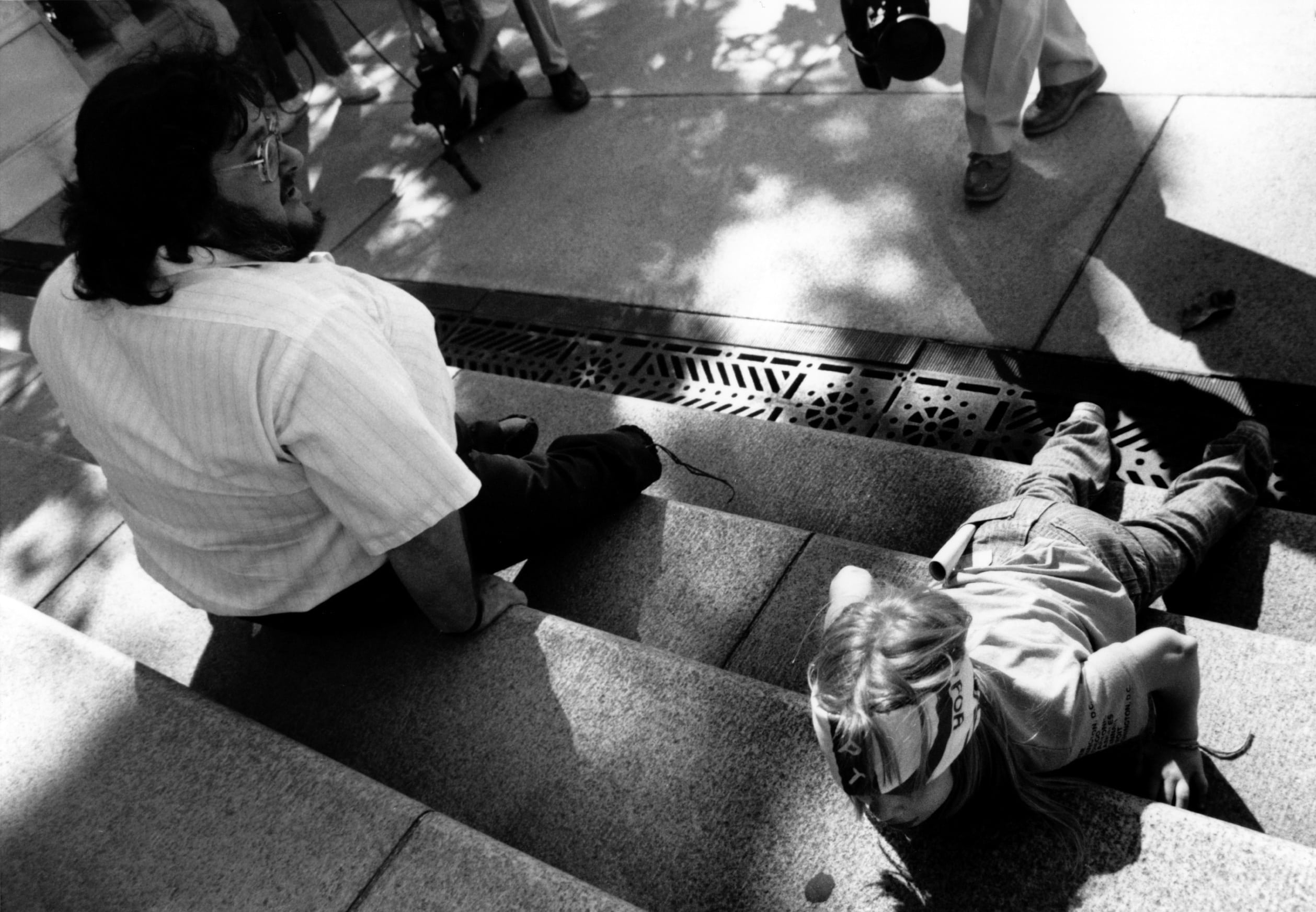
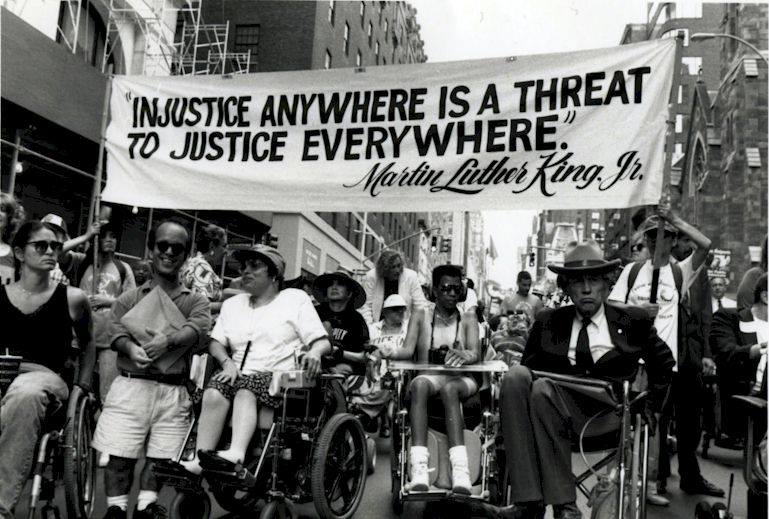





Twitter
Google plus
LinkedIn